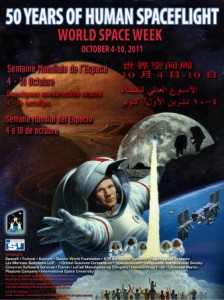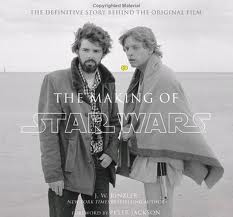
You may not be aware, but we are in the midst of World Space Week (4-10 October) which aims “to celebrate each year at the international level the contributions of space science and technology to the betterment of the human condition”; which all sounds rather Captain Kirk-ish. But there’s no denying that the heavens have inspired and fascinated people from all walks of life throughout the ages, and that’s no less true of the arts than any other field of human endeavour.
The planets, Gustav Holst, et. al, conducted by Simon Rattle

EMI Classics ; 2006
An obvious choice I suppose, but Holst’s musical portrait of the Solar System remains a cornerstone of the classical music repertoire, and a jolly good listen as well! This disc also features other works inspired by the cosmos, including Brett Dean’s Komarov’s Fall, commissioned specially for this concert in Berlin in 2006.
NASA/art : 50 years of exploration by James Dean and Bertram Ulrich

Abrams, 2008
This remarkably interesting and varied survey of art created for the NASA Art Program travels from the hyper realism of Norman Rockwell to the more abstract vision of James Cunningham, and all points in-between. There’s even a couple of William Wegman’s Weimaraners executing a very adorable space-walk!
Beyond : visions of the interplanetary probes by Michael Benson

H.N. Abrams, 2003
This book poses a challenge to what we call creativity, or indeed art. Very beautiful and startling photos taken by machines as they travel through the vast reaches of space; but can a machine (a robot) create art? Arthur C.Clarke thinks so: “The argument that originality and creativity are solely human attributes reminds me of those whip-cracking buggy drivers who used to make fun of broken-down Model Ts. And yet despite the evidence of these pictures, which are surely some of the greatest landscape photographs ever taken, many will refuse to grant any degree of intelligence to these robots.” Now there’s a hand grenade thrown into the studio!
2001 : a space odyssey by Peter Kramer

British Film Institute, 2010
Speaking of Arthur C.Clarke, Stanley Kubrick’s film of his seminal novel of space exploration remains one of the most admired science-fiction films of all time, virtually redrawing the way in which space is represented in all branches of the arts; even more recent blockbusters have to tip their hats!
The making of Star Wars : the definitive story behind the original film / J.W. Rinzler

Ebury, 2007
If you just search for images of “stars” on our catalogue you may well find a constellation closer to home!



(Nerd alert! Nerd alert!) ‘2001’ was an original screenplay, rather than the ‘film of (Clarke’s) seminal novel’. The book 2001 is Clarke’s subsequent novelization of his and Kubrick’s screenplay. In broader terms, 2001 derives from two earlier Clarke works: a short story ‘The Sentinel’ and his novel ‘Childhood’s End’. Stop Dave…please stop…I can feel my mind going Dave…Dr. Chandra taught me to sing a song…would you like to hear it?…It’s called ‘Daisy’…
Thanks for clearing that up Gerard, I hang my head in shame! Now, can you just explain what it all means?